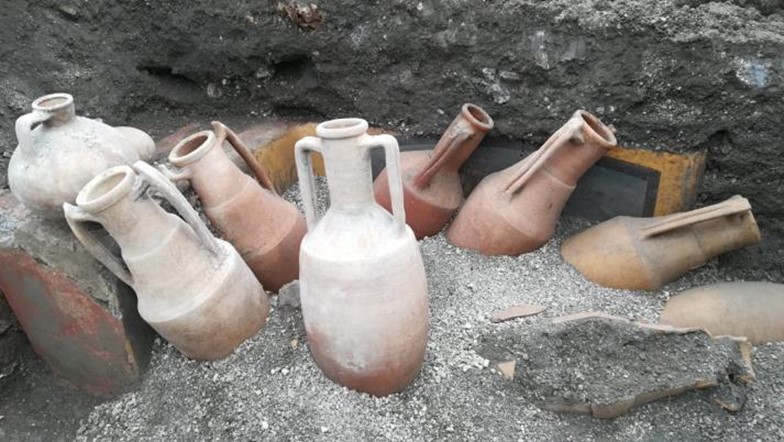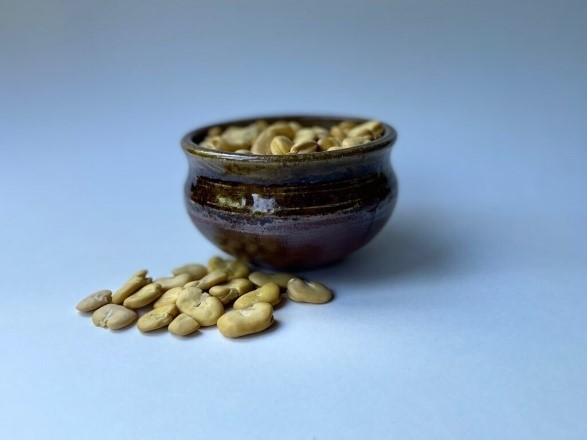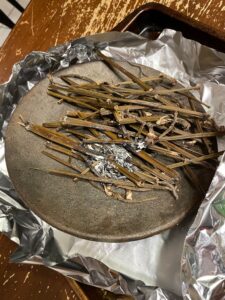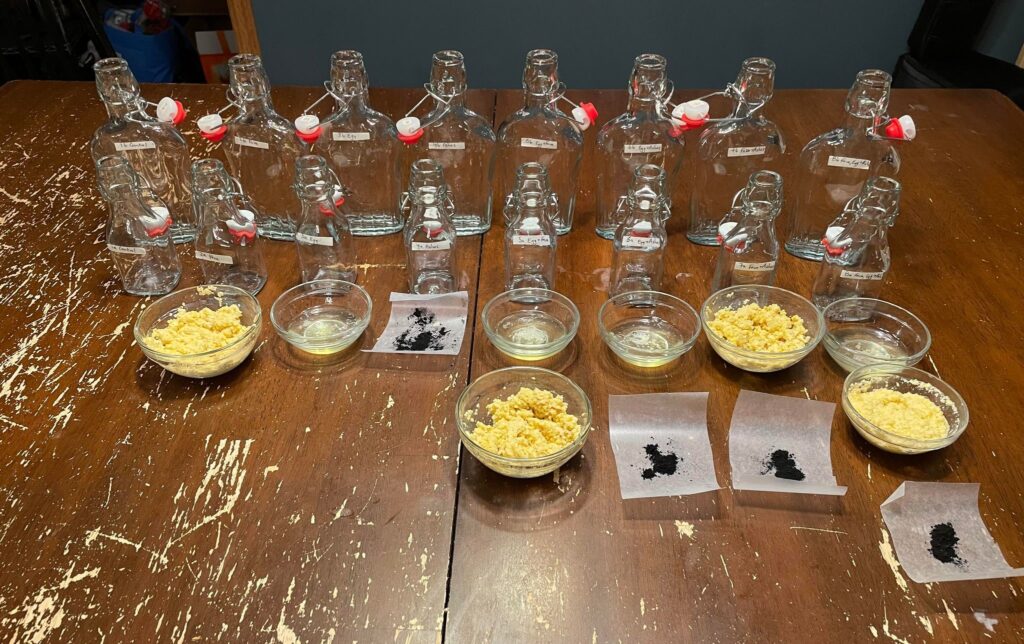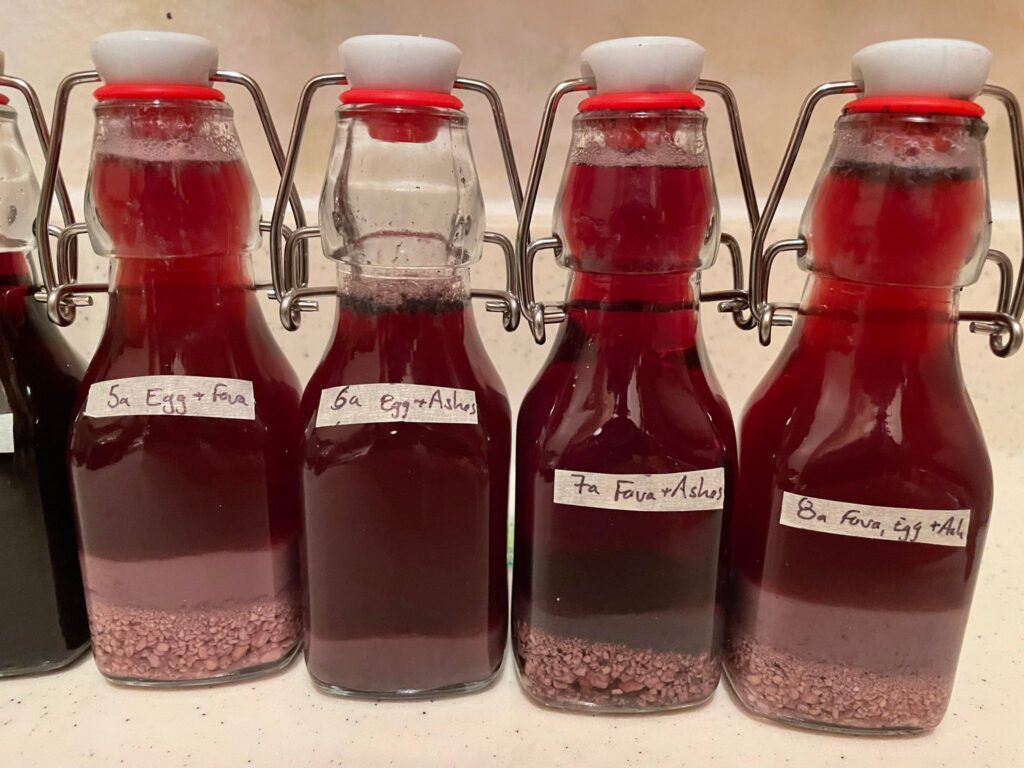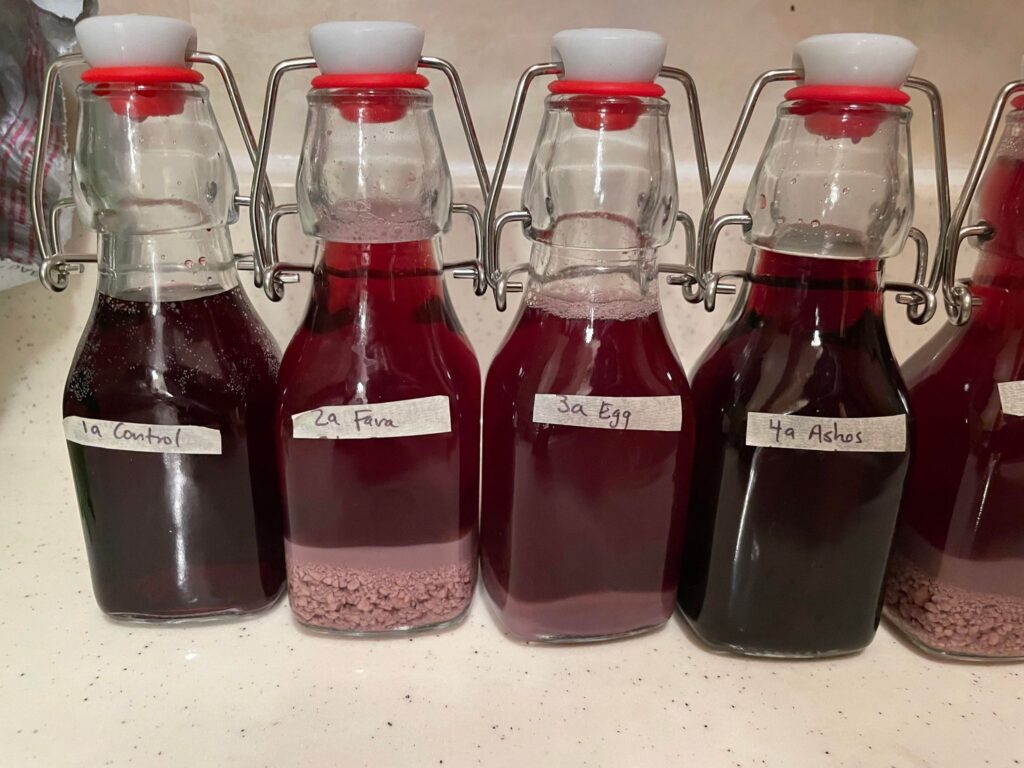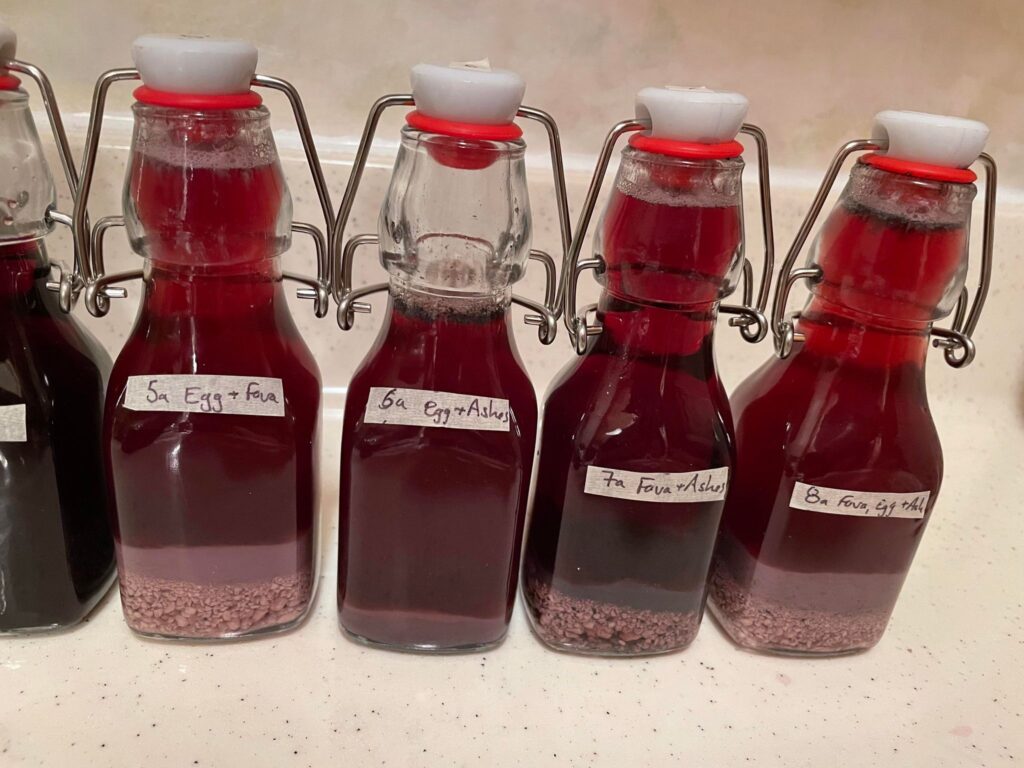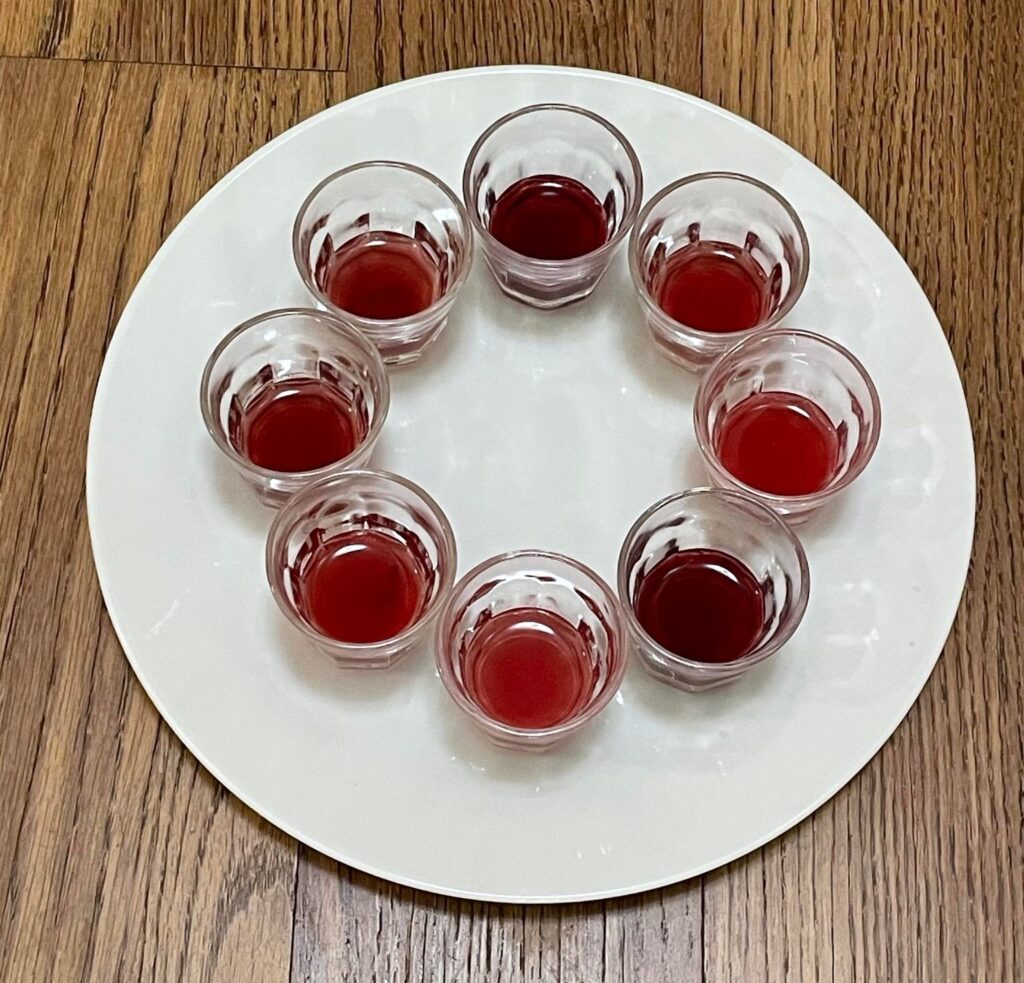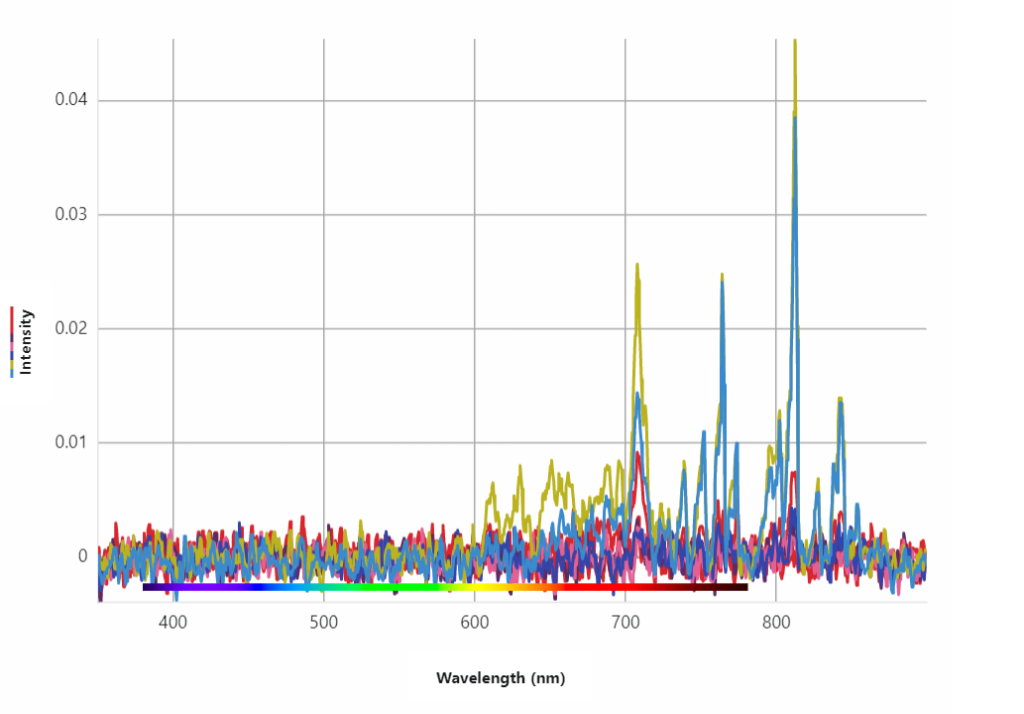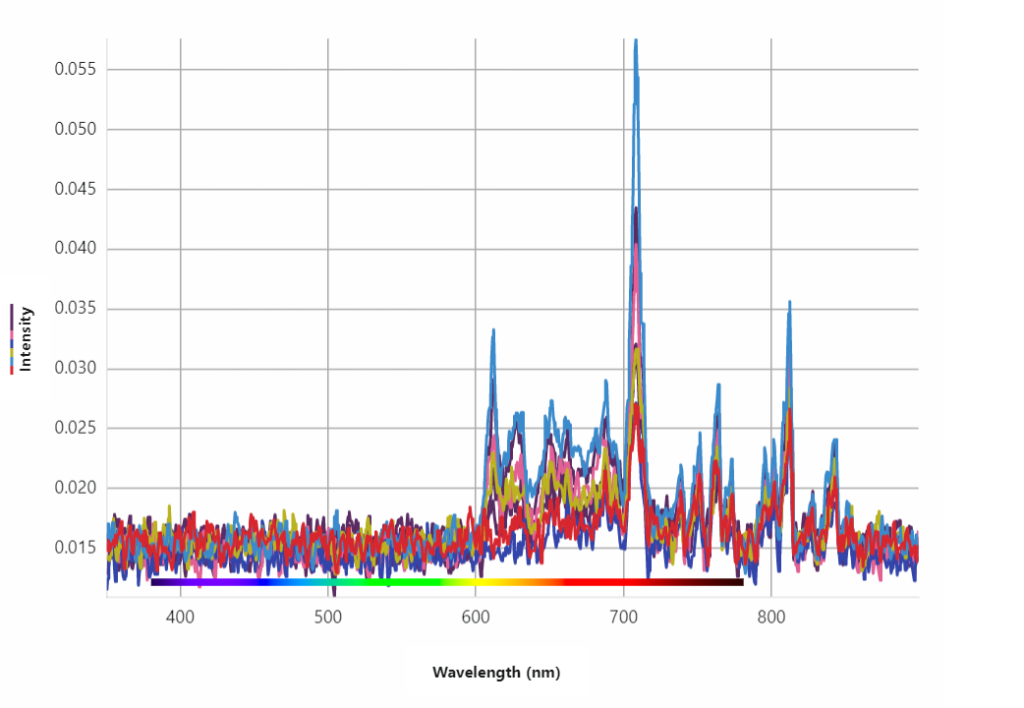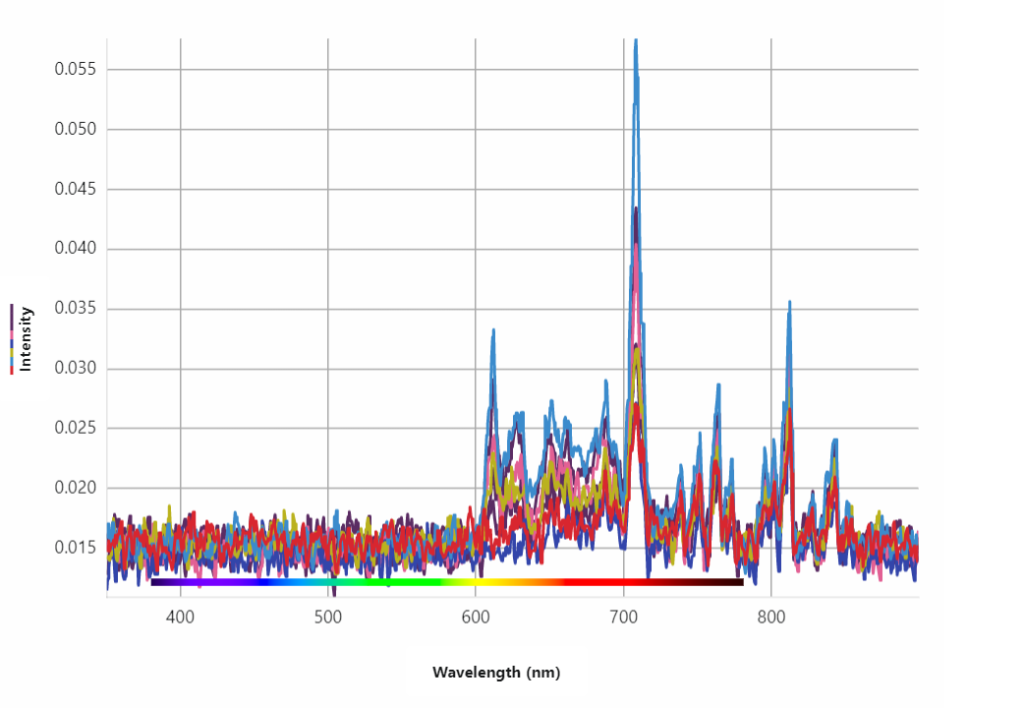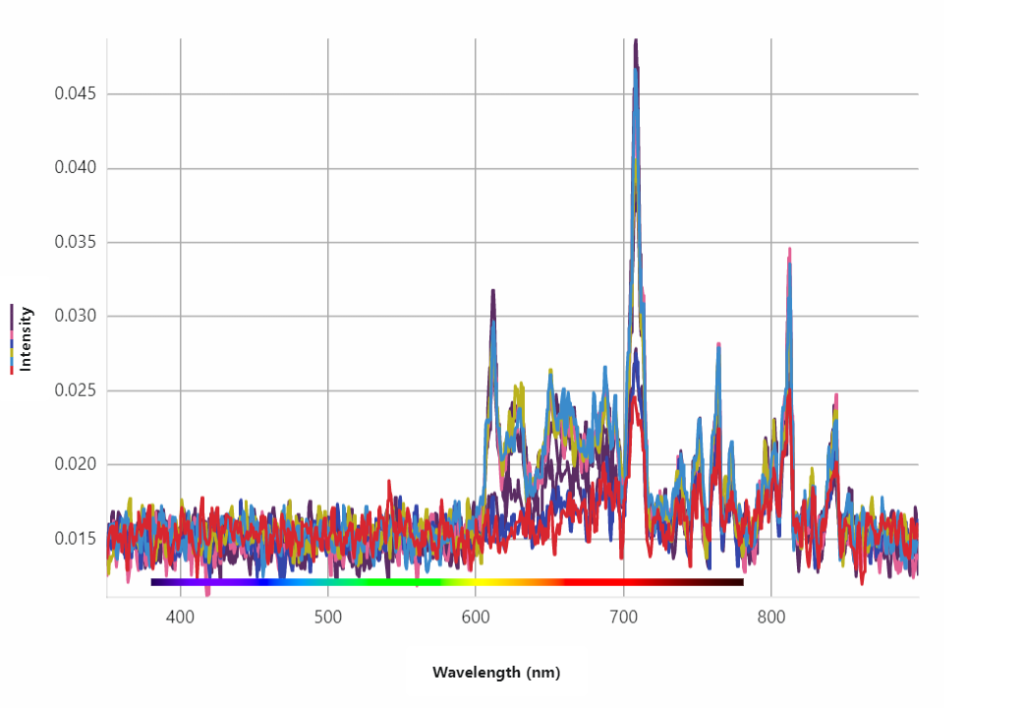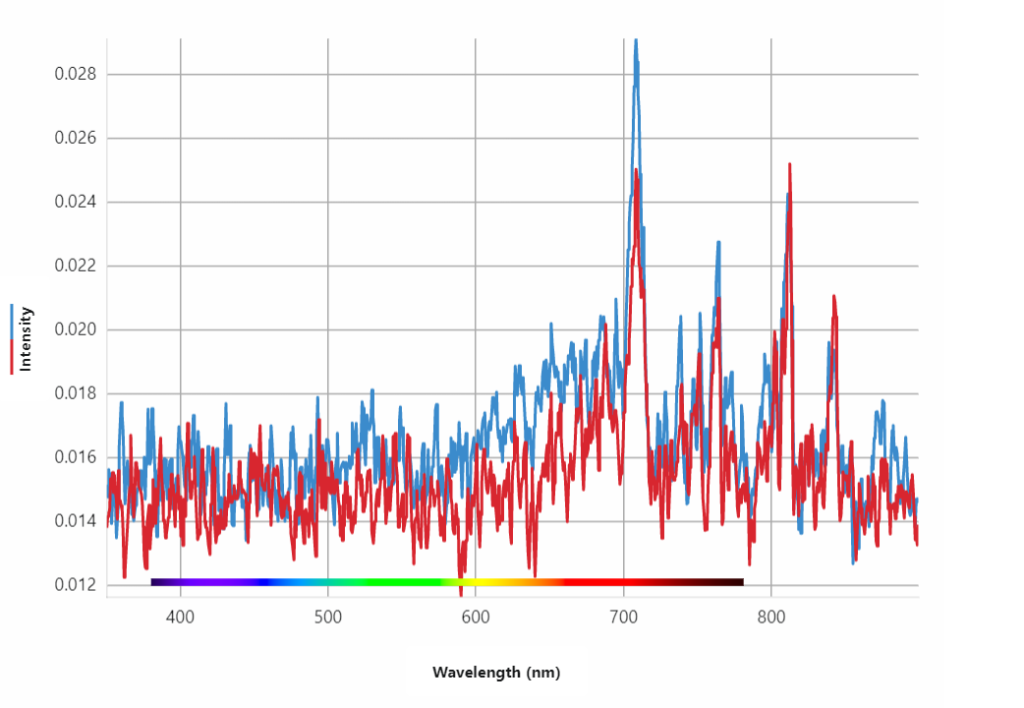Wine was an important part of Roman culture, with estimates of consumption largely agreeing on approximately a half liter of undiluted wine for each man, woman, and child in urban populations. (Phillips 2000, 31) With that level of consumption, wines of every grade and hue were produced to meet demand but Pliny lists eighty-eight varieties of wines that are considered “generous” or excellent, (Pliny the Elder, Bostock, and Riley R 2019, 239-245) many of which would be considered by the modern palate to be very sweet and would appear to be a “white” wine. (Van Limbergen 2018, 1–44)
Fresco with dolia1
In 2019-2020, a well-preserved thermopolium was excavated in Pompeii and it was opened to the public in 2021, which was well-publicized in the press. Thermapolia were essentially fast-food restaurants for the residents who did not have cooking facilities in their homes. This site included frescoes illustrating their menu as well as dolia (food storage containers), amphorae, and multiple food residues. (Pompeii Sites 2020) The spectacularly preserved location inspired a group of artisans to re-create a food service counter at Northshield’s Warriors and Warlords in 2022. (Kveberg, 2022) Wine was considered an important menu item to include and a comment from Valeria Amoretti, an anthropologist working on the laboratory results from the site, was particularly intriguing. She said, “At the bottom of a dolium – which has been identified as a container for wine…- the presence of beans was detected, which had been intentionally broken apart or ground. In his De re Coquinaria (I,5), Apicius explains the reason for this, asserting that they were used in order to modify the taste and colour of the wine, bleaching it.” (Pompeii Sites 2020)
In order to improve the price or palatability of wine, it is possible to dilute, adulterate, or otherwise modify it. While recipes abound for spicing or sweetening wine,2 here was the suggestion that the color of the wine could also be modifiable, possibly to mimic the more highly favored styles of wine enumerated by Pliny.
Apicius’ Recipe
In De re Coquinaria, there is indeed a recipe for altering the clarity, and possibly the color, of wine. Depending on the translation, the recipe is either number five or six in Book I. Several translations of the recipe were consulted:
Original Latin (Apicius, nd):
VI. VINVM EX ATRO CANDIDVM FACIES:
Lomentum ex faba factum vel ovorum trium alborem in lagonam mittis et diutissime agitas. alia die erit candidum. et cineres vitis albae idem faciunt.
Literally Translated:
6. TO MAKE WHITE WINE FROM THE DARK:
Put a mixture of beans or the whites of three eggs into the basin and stir for a very long time. The next day it will be white. The ashes of the white vine do the same.3
Vehling 1977 translation (Apicius and Vehling 1977):
5 To Clarify Muddy Wine (Vinum ex atro candidum facies)
Put bean meal and the whites of three eggs in a mixing bowl. Mix thoroughly with a whip and add to the wine, stirring for a long time. The next day the wine will be clear. Ashes of vines have the same effect. (A footnote states: Ex Lister whose version we prefer. He says, Alias die erit candidum while Tor. adds white salt, saying, sal si adieceris candidum, same as Tac. This is unusual, although the ancients have at times treated wine with sea water.)
Grocock and Grainger 2006 translation (Apicius, Grocock, and Grainger 2006, 137):
1.6 How to make cloudy wine clear: you put a paste made of beans or the white of three eggs into a large flask and stir for a long time. The next day it will be clear. The ashes of white vines do the same. (A footnote states: It is possible that the ‘dark’ wine here is actually ‘cloudy’ and ‘white’ refers to ‘clear’ wine.)
This demonstrates that while several translations call the transformation from “cloudy” to “clear,” the literal translation of the text specifies “dark” to “white.” Latin has words for “clear” (e.g., translucidus, perlucidus) and “cloudy” (e.g., turbidus), so why choose not one, but two “white” words (candidum, albae) when discussing treating a “dark” (atro) wine? Further, Pliny notes that “The wines produced from the vines of which we have hitherto made mention, even though the grapes are black, become, all of them, when old, of a white complexion.” (Pliny the Elder, Bostock, and Riley R 2019, 225) There seemed to be some room for the red-to-white conversion that had initially been intriguing, but could this even work and how would we know?
Fining
The process of clarifying a wine is called “fining” and is still in use in modern winemaking as there is still a desire for bright, clear wines and still are challenges in producing such. A fining agent can affect the wine’s color, odor, flavor, stability and mouthfeel. The purely physical action of a fining agent is usually to attract, bind, and precipitate out a particulate suspended in the wine. Other actions and effects are possible, depending on the fining agent chosen. (Winemakers Depot n.d.) There are complex synthetic modern fining agents but there are also several options that would have been available in the ancient world, including gelatin, Irish moss, egg whites, and carbon (charcoal). Egg whites are particularly well suited to red wines as the albumin and globulin in the whites are positively charged which attract the negatively charged particles, including the tannins.(Ward 2024) Interestingly, there is the caution that use of charcoal can “strip your wine of color and flavor.” (Collings 2002, Winemakers Depot n.d.)
Ingredient choices
Wine
Sweet wines were preferred by the Romans and a red was required to test the wine lightening process. Unwilling to waste expensive wine, a Trader Joes sommelier was consulted and the Charles Shaw Red Blend was purchased as the sweetest of the red wines available at that price point.
Amphorae in Thermopolium Regio V4
Fava Beans
The original Latin recipe refers to “faba” but this is translated simply as “beans” rather than any specific type of beans by Google, Vehling, and Grocock and Grainger. The identity of the bean meal as fava (or broad) beans is likely, however, based on archaeological evidence. While no published scientific assessment is available, in a popular press interview, Valeria Amoretti, one of the anthropologists working on the food residues said “at the bottom of a wine container were traces of ground fava beans, which in ancient times were added to wine for flavor and to lighten its color.” (The Times of Israel 2020)
Previous evaluations of dolia from Thermopolium V, 4, 6-8 in Pompeii revealed oleic acid residues in a wine dolia. (Pecci et al. 2021) Fava beans have a considerable amount of oleic acid, (Food Fact n.d.) but so do olives, eggs, and many other food products. A wider survey of plastered vats was slightly more specific, identifying some wine vats as containing non-olive oil vegetable residues.(Pecci, Ontiveros, and Garnier 2010) It is possible this represents reuse of the vats, but could also be evidence of clarifying the wine with a fava or other bean meal or even eggs, in the case of the undifferentiated oleic acid residue.
Fava beans
Egg Whites
The type of eggs were not specified, so standard chicken egg whites were used for this experiment. Salt that was added to the egg whites was fine, uniodized table salt.
Intact Roman era egg5
Ashes
The recipe calls for ashes of “white vines” but it is not clear which vines are meant. In any event, once the vines are burnt and reduced to ashes (essentially carbon), the source should not matter greatly in the outcome. However, since the intent is to turn red wine white, the vines of white wine grapes were proposed. Ashes are added almost as an afterthought option in the recipe and
initially it had not seemed possible to include them as an
experimental option until a spring storm provided a fair about of deadfall from a local winery. Two large handfuls of vines approximately 24 inches long were stripped of their leaves and grapes, dried in the oven at low heat until brittle, and then placed in a fireproof container. However, keeping in the theme of Fail&S, the vines simply refused to burn. With direct application of a lighter, they would slowly smolder but would not ignite and would not reduce to ashes.
Considering the inability to produce white wine vine ashes, carbon from activated charcoal was substituted instead. (Collings 2002) This will be obtained from commercially available activated charcoal capsules.
Failed Vine Ash Making
Redaction of the Recipe to an Experimental Procedure
The process for this recipe is fairly simple but few quantities are specified.
Wine
The amount of wine is specified as a basin, large flask, or mixing bowl. A moderate size mixing bowl is about eight cups but to make proportions simpler, we will use nine cups as the base volume for this experiment.
Fava Beans
A volume or weight is not specified, only to put bean meal or a paste made of beans into the wine. Prior experiments used 2 ounces of fava bean meal to 8 ounces of wine. (Kveberg 2022) This seemed to be partially effective and higher amounts resulted in an unacceptable flavor and loss of volume. However, instead of adding a coarse bean meal, the beans will be ground more finely and wet with water to form a paste before addition to the wine.
Egg Whites
Finally, a specific quantity is provided – three eggs whites per batch. While Roman eggs may have been smaller and there is great variability between the possible sizes of eggs, standard American large chicken eggs will be used. Modern fining instructions suggest only one egg white per 5-7 gallons of wine, (Collings 2002, Ward 2024) so three eggs per half gallon seems excessive, however, as the primary aim of this experiment is to maximize the effect on color and clarity rather than optimizing the taste of the end product, a potential surplus is preferred to an insufficient quantity. Apicius’ recipe calls for three egg whites per portion, which we are considering nine cups or 72 ounces, or one egg white per 24 ounces. Each sample is to be 12 ounces, or about half of an egg white.
The required duration for fining with eggs also varies widely in modern sources, from immediate action (Fermentations 2023) up to two weeks. (Ward 2024) To standardize the effect, eggs will be trialed for the same amount of time as the other fining agents. Interestingly, an alternate reading of the passage “Alias die erit candidum” (usually translated as “The next day the wine will be clear”) is “Sal si adieceris candidum” (“If you add white salt”). (Apicius and Vehling 1977) Modern fining recipes sometimes include salt with the eggs with the intent of reducing the foam created by whipping the egg and increasing the effectiveness. (Collings 2002) As the hope is to maximize effectiveness, the egg will be whipped with a small amount of salt and water to obtain a smooth, non-foamy mixture before being added to the experimental samples.
“Ashes”
Since no white wine vine ashes were available, activated carbon capsules were substituted. A dose of 0.025-0.6 grams per liter is suggested. (Collings 2002) A liter is essentially a quart (1.05 liters, 32 ounces), so each 12-ounce sample will require 0.0094-0.225 grams. Overdosing with charcoal risks stripping the wine of color and flavor (Collings 2002) but since color stripping is desired, even if the flavor alteration is not, one 260 mg capsule of activated charcoal will be added per sample. Some small amount of loss in transferring from the gelatin capsule can be assumed and, again, an over-dosing as a proof of concept is more valuable to this experiment than an under-dosing that fails to show an effect. Refinements in the interests of flavor or palate can be made at a later date.
Experimental Recipes
In order to provide an experimental sample that is uniform and contains an equal amount of sediment, the bottles of wine will be shaken vigorously for one minute before combining the bottles into one common vat of wine and stirred. A portion for each sample will be measured out promptly and the vat stirred before removing each sample. While the original recipe calls for beans or egg whites or ashes, each fining ingredient will be trialed alone and in combination with each and all of the others. All weights are measures with an Ohaus digital pharmaceutical grade scale. All liquid measures are performed with household measuring implements (>30mL) or a 10mL syringe (measurements <30mL).
The original recipe says to stir or whip for a long time and the next day it will be clear. However, a specific amount of time of mixing is not provided and it is unclear if the wine becomes clear the next morning or if it requires a full 24 hours. To assure good mixing, each experimental batch will be whisked by hand for one minute with a standard household whisk or shaken in the bottle.
One question presented by prior attempts to approach this recipe was how to best measure the magnitude of the effect of any treatments. In order to provide objective data, the color and clarity of the samples will be assessed visually and through spectroscopy (Vernier Go Direct Emissions Spectrometer GDX-SPEC-EM). Spectroscopy will occur in a dark room using a full spectrum fluorescent lamp as a light source Samples will be assessed in sealed glass bottles at 0, 12, and 24 hours. This is meant to approximate review of the wine “in the morning” and after a full day. Samples will be viewed through thinner, taller bottles and shorter, deeper bottles to potentially allow for additional differences in color or sediment to be appreciated. The control sample will be assessed for taste and visual color at 0 hours. All samples will be assessed for taste and visual color after 24 hours. Initial attempts at performing this experiment included filtration of the results. For the purposes of this experiment, we will rely on sedimentation only since bean meal is seen at the bottom of the dolia from the thermopolium, implying no or poor filtration. One set of samples will be provided at the competition for viewing and the other set will be available for limited tasting.
The samples will include:
- Control – unchanged 12 ounces red wine
- Fava Bean – 12 ounces red wine with 1.5 ounces fava bean made into a paste with water
- Egg – 12 ounces red wine with ¼ of the egg/salt/water mixture (see detailed procedure)
- Ashes – 12 ounces red wine with 260mg of activated charcoal
- Egg and Fava – 12 ounces red wine with ¼ of the egg/salt/water mixture (see detailed procedure) and 1.5 ounces fava bean made into a paste with water
- Egg and Ashes – 12 ounces red wine with ¼ of the egg/salt/water mixture (see detailed procedure) and 260mg of activated charcoal
- Fava and Ashes – 12 ounces red wine with 1.5 ounces fava bean made into a paste with water and 260mg of activated charcoal
- Fava, Egg, and Ashes – 12 ounces red wine with 1.5 ounces fava bean made into a paste with water, ¼ of the egg/salt/water mixture (see detailed procedure), and 260mg of activated charcoal
Objective Results
Samples were evaluated by spectroscopy at 0, 12, 24, and 48 hours.
0 hours
Almost immediate actions were seen for the Fava bean (2a) and Egg (3a) samples, with increased peaks at ~710, ~760, and ~810. The increases were modest, from ~0.01 to ~0.25-0.43, though the greatest increases in light intensity were in the non-visual range (~810nm). The speed of the effect was the most impressive component and shows the suggestion of needing to wait two weeks for eggs to take effect may be exaggerated. (Ward 2024) Other samples were very disordered and similar in profile to the control (1a).
12 hours
More improvement in light transparency is seen, especially in the 600-725nm range, where most samples see an improvement over the control (1a, red), but that improvement is negligible to moderate for most samples. The greatest effect is seen with the Fava bean sample (2a) which improves to ~0.0525 at about 710nm.
24 hours
Continued improvement in transparency is seen, especially in the egg and fava bean samples. The greatest effect is seen in the Fava sample (2a) at ~610nm (0.0325), ~710nm (0.057), and ~810nm (0.035). The transparency seems consistent in the 350nm-600nm range for all samples.
48 hours
In the final measurements, the greatest effect was seen at 708nm, which is in the red area of the spectrum. The precise results were:
| 1a Control | Red | 0.024 |
| 2a Fava Bean | Light blue | 0.047 |
| 3a Eggs | Green | 0.041 |
| 4a Ashes | Dark Blue | 0.027 |
| 5a Fava and Eggs | Pink | 0.045 |
| 6a Egg and Ashes | Purple | 0.039 |
| 7a Fava and Ashes | Grey-purple | 0.028 |
| 8a Fava, Eggs, and Ashes | Dark Purple | 0.048 |
The top three performers are highlighted in green and it can be noted that they are each samples that used fava beans as one of the clarifying agents. In fact, the preparation that combined all three potential treatments performed only slightly better than the fava beans alone.
Other high-preforming points were at 610nm (8a Fava, Eggs, and Ashes 0.032, 7a Fava and Ashes 0.03, 3a Eggs 0.028, 5a Fava and Eggs 0.028. 6a Eggs and Ashes 0.026) and 812nm (5a Fava and Eggs 0.034, 8a Fava, Eggs, and Ashes 0.033, 6a Eggs and Ashes 0.032, 2a Fava 0.031, 3a Eggs 0.03), although this latter wavelength is out of the visual spectrum. This shows again a predominance of fava beans and/or egg as being the most effective objective clarifying agents. See additional results on the detail graphs. However, while it is nice to have a clear wine, visual aesthetics are not the only metric of interest for wine and we must consider other aspects, including flavor.
Subjective Results
Each sample was visually inspected at 0, 12, 24, and 48 hours. Tasting was performed at 44 hours by the investigator and by a subject with greater knowledge of and palate for red wines.
| Sample | 0 hours | 12 hours | 24 hours | 48 hours | Tasting (44 hours) |
| 1b Control | Clear dark red | No perceptible change | No perceptible change | No perceptible visual change. | Fruity flavor with slight tart tannin bite. |
| 2b Fava | Opaque mauve at top, lighter at the bottom, significant amt of beans at bottom, foam on top | Bottom layer mottled cream and mauve, topped by a pink layer of finer particulate and a lighter, almost transparent red fluid | Top layer continues to clarify as fine particulates continue to precipitate out. Fluid is lighter but less clear than 1b. | Top fluid is very clear light red, lightest transparent color. | Heavy bean aroma, bean flavor is present but not unpleasant. Tastes less sweet than 1b, retains tartness but less tannic tang. Best experimental? |
| 3b Eggs | Darker opaque mauve, foam on top | Bottom mauve layer is lighter than 2b, top fluid layer is lighter in color but more opaque than 2a | Clouds of suspended particulates still present lighter in color than 1b but cloudy. | Lighter fluid than 1b but cloudy with suspended particles. | Nice mouth feel but still with sour aftertaste and very mild flavor. 2nd best experiment. |
| 4b Ashes | Clear dark red, only slightly darker than control | Fluid appears darker red than 1b and is just transparent, small amount of floating specks | Slightly darker than 1b with a thin layer of particulates on the bottom. Otherwise clear. | Super clear, a little darker than 1b, black bottom residue | Still tastes very tannic, retains sweetness and tartness, but is less fruity than 1b. |
| 5b Eggs and Fava | Opaque mauve at top, lighter at the bottom, significant amt of beans at bottom, foam on top | Appears similar to 2b except top fluid id a little more opaque | Light red, almost a little orange. Cloudy similar to 3b. | Thicker layer of sediment and is less clear than 3b. Color similar to 3b. | Very strong bean aroma with unpleasant flavor. Sour and bean are only remaining flavors. Worst. |
| 6b Egg and Ashes | Darker purple than 3b with black specks in foam | Thick layer of light mauve at bottom like 3b, but top fluid is darker and opaque | Cloudy like 3b but slightly darker. Black particles seen in foam on top and particulate on bottom. | Dark mauve fine sediment over cloudy medium red fluid with suspended particles. Translucent. | Sweet and a little fruity with a sharp acidic aftertaste. |
| 7b Fava and Ashes | Dark opaque mauve (darker than 2b or 6b), foam at top, and beans at bottom | Bottom has thick mottled layer like 2b, thinner layer of red-gray fine particulates, topped with a lighter red than 1b that is just transparent | Thin layer of fine dark purple fine precipitate over a mottled red and pink coarse particulate layer. Fluid is very clear and lighter than 1b | Clear medium dark red fluid over a think dark mauve fine particle layer | Very strong beany aroma. Flavor not as bad as 5b but very beany and not pleasant. |
| 8b Fava, Eggs, and Ashes | Appears mottled, pink and mauve beans at bottom, foam at top , and black specks in foam | Very similar to 7b except the top layer appears slightly lighter in color | Very light colored fluid but cloudy. Still suspended matter. Fine precipitate is lavender, coarse precipitate like 2b and 7b | Very cloudy medium red fluid over a thick fine purple particulate layer over a mottled bottom layer. | More mild bean smell. Taste is not awful but not lovely. Flavor is very earthy, less sweet and retains some acidity. |
Of note, in no case did the wine become “white” by our modern understanding, so an interpretation of this as a wine clarifying process is likely more correct. The “white” in the recipe may be a result of the alternate reading of the recipe where salt should be added. (Apicius and Vehling 1977).
Proposed Best Recipe
Based on the results of the subjective and objective clarity measures, the Fava bean samples seem to be the most successful. However, the addition of egg and/or ashes to the fava bean treatment seems to further adversely affect the flavor with the eggs and fava leaving only a sour bean taste and the ashes and fava being overwhelmingly beany. Oddly, the option with all three treatments is better, but tastes more earthy rather than like the fruity red we started with. The Egg samples performed well for clarifying per the objective measures but were still cloudy on visualization and tended to have a less pleasant sour flavor. The proposed best recipe for clarifying a cloudy red wine is to add no more than 1.5 weight ounces of fava beans per 12 ounces of red wine. Stir at 12 and 24 hours and then allow to settle for an additional 24 hours.
Future Directions
There is some very interesting work going on in the study of ancient and Roman wines, including some very recent information on how the earthenware vessels themselves affect the wine. (Van Limbergen and Dodd 2024) Interestingly, there was just published an entire book on how scientific methods can be used to better understand how Roman wines were made, changed, and used, although copies are not yet available in local research libraries. (Van Limbergen and Komar 2024) It will be interesting to review once it is available and compare to the objective measures used in this project.
Further, many Roman wines were adulterated for flavor, not just clarity. It could be interesting to review how the more successful of these experiments interact with wine recipes meant to sweeten or spice the wine. It is possible than any objectionable odors or flavors may be able to be overridden by the additional ingredients.
Conclusions
“Who can entertain a doubt that some kinds of wine are more agreeable to the palate than others…
Pliny the Elder, Bostock, and Riley R 2019, 239
Let each person, therefore, constitute himself his own judge as to which kind it is that occupies the pre-eminence.”
Finally, it must be acknowledged that, regardless of the objective and subjective measures explored in this experiment or the potential future additives, there is no firm understanding of what is the best or even a good wine. Perhaps the cloudy wine that retains an interesting character will be superior to some. Perhaps the Romans loved the heavy bean flavor of the fava-treated wines. While these experiments confirm that Apicius’ recipe for clarifying a muddy red wine is indeed effective and able to be independently verified, we should keep in mind Pliny’s instruction and drink, and enjoy, the wine pre-eminent to our own tastes.
Acknowledgements
I would like to gratefully acknowledge the individuals who made this experiment possible:
- Mistress Margaret Malise de Kyrkyntolaghe, known as Mysie (Melissa Vigil) for the kind loan of the spectrometer. The scientific equipment allowed for an objective and quantifiable assessment of the effects of the various recipes that simply would not have otherwise been possible.
- Æðelwald Bald (Denis Zdanovsky), who kindly agreed, in multiple phases of this experiment, to knowingly taste and review objectively objectionable wines. As I cannot tolerate red wines due to migraines, his greater knowledge of oenology and ability to actually drink the wines and provide insights on their profiles was commendable.
- The Thermopolium Project Collaborators (Alissende, Bridei, Sol, Farolfus, Hrothgar, Marcella, and Asny. This whole project was conceived as an outbranching of our studies of the Thermopolium in Regio V in Pompeii. They were all inspirations to greater levels of geek!
Bibliography
Apicius. “Apicius – De Re Coquinaria – Liber Primus.” Bibliotheca Augustana. Accessed May 23, 2024. https://www.hs-augsburg.de/~harsch/Chronologia/Lspost04/Apicius/api_re01.html.
Apicius, Christopher Grocock, and Sally Grainger. 2006. Apicius: A Critical Edition with an Introduction and English Translation. Prospect Books.
Apicius, and Joseph D. Vehling. 1977. Cookery and Dining in Imperial Rome: A Bibliography, Critical Review and Translation of the Ancient Book Known as ‘Apicius De Re Coquinaria’. New York: Dover Publications. https://penelope.uchicago.edu/Thayer/E/Roman/Texts/Apicius/home.html.
Collings, Bill. “Fining and Fining Agents.” British Columbia Artisan Winemakers Association. January 18, 2002. https://bcawa.ca/winemaking/fining.htm.
Fermentations. “How to Clarify Wine – The Best Easy Way!” Fermentations. May 7, 2023. https://fermentations.co.uk/how-to-clarify-wine-the-best-easy-way/.
Food Fact. “Fava Beans: Complete Lipids and Fats Profile.” Food Fact. Accessed May 23, 2024. https://www.foodfact.info/food/fava-beans/lipids/#:~:text=Oleic,acid%20%2818%3A1%29.
Kveberg, Jean. “The Thermopolium Project.” Eithni’s Keep. Accessed May 23, 2024. www.eithni.com/thermopolium.
Pecci, A., S Ritondale, S Mileto, L Toniolo, V Amoretti, and D Cottica. “Wine Production at the so Called Thermopolium V, 4, 6-8 at Pompeii.” Vine-growing and Winemaking in the Roman World: An International Conference. 27-29 October 2021. Universitat De Barcelona, October 29, 2021. https://app.virtualpostersession.org/e/1aee397726cb530bffe7077ac1764034.
Pecci, Alessandra, Miguel Ángel Cau Ontiveros, and Nicolas Garnier. “Identifying wine and oil production: analysis of residues from Roman and Late Antique plastered vats.” Journal of Archaeological Science 40, no. 12 (2013): 4491-4498.
Phillips, Roderick. A short history of wine. Allan Lane, 2000.
Pliny the Elder, John Bostock, and Henry T. Riley R. “The Natural History of Pliny.” Project Gutenberg. March 26, 2019. https://www.gutenberg.org/cache/epub/59131/pg59131-images.html#BOOK_XIV_CHAP_1.
Pompeii Sites. “The Snack Bar of Regio V Resurfaces in Its Entirety with Scenes of Still Life, Food Residues, Animal Bones and Victims of the Eruption.” Pompeii Sites. Archaeological Park of Pompeii, December 29, 2020. https://pompeiisites.org/en/comunicati/the-ancient-snack-bar-of-regio-v-resurfaces-in-its-entirety-with-scenes-of-still-life-food-residues-animal-bones-and-victims-of-the-eruption/.
The Times of Israel. “‘Fast Food’ Bar Unearthed in Pompeii: What They Were Eating as Vesuvius Erupted.” December 27, 2020. https://www.timesofisrael.com/fast-food-bar-unearthed-in-pompeii-offering-glimpse-of-ancient-tastes/.
Van Limbergen, Dimitri. “What Romans ate and how much they ate of it. Old and new research on eating habits and dietary proportions in classical antiquity.” Revue belge de philologie et d’histoire 96, no. 3 (2018): 1049-1092.
Van Limbergen, Dimitri, and Emlyn Dodd. “Methods in Ancient Wine Archaeology: Scientific Approaches in Roman Contexts.” (2024): 1-336. (ISBN: 9781350346666 – Permalink: http://digital.casalini.it/9781350346666)
Van Limbergen, Dimitri, and Paulina Komar. “Making wine in earthenware vessels: a comparative approach to Roman vinification.” Antiquity 98, no. 397 (2024): 85-101.
(https://doi.org/10.15184/aqy.2023.193.)
Ward, John . “How to Clarify Wine – The Best 6 Methods.” Winemaker’s Corner. March 31, 2024. https://winemakerscorner.com/wine-products/how-to-clarify-wine/.
Winemakers Depot. “Fining Agents Cheat Sheet.” Accessed May 23, 2024. https://winemakersdepot.com/Fining-Agents-Cheat-Sheet.
Appendix A – Detailed Experimental Procedure
Procedure:
- Prepare bean paste
- Grind approximately 6 weight ounces of fava beans to a medium fine powder.
- Weigh out three portions of 1.5 weight ounces each and place in individual portion bowls.
- To each sample, add enough water to form a soft paste (25mL)
- Prepare egg white and salt mixture
- Crack two eggs into a small mixing bowl and remove the yolks
- Add 2 fluid ounces of water and 1/4 teaspoon of fine non-iodized salt and whip well. If foaming persists, add small additional amount of salt.
- Split the egg/water/salt mixture into quarters, setting aside each portion in individual bowls. Each portion is approximately 25mL.
- Prepare “Ashes”
- Open a 260mg capsule of activated charcoal onto a small piece of weigh paper, making sure to tap out as much powder as possible but not to include any portion of the gelatin capsule.
- Set portions aside.
- Label sample bottles according to the sample list above– one tall thin bottle and one shorter square bottle for each sample
- Open and mix four bottles of Charles Schwab Red Blend wine in a large mixing bowl.
- Measure out 12 ounces of red wine into eight separate containers.
- Prepare each sample:
- Sample 1 – Control
- Place 8 ounces in the large flat bottle labeled “1b Control”
- Place 4 ounces in the smaller square bottle labeled “1a Control”
- Seal both bottles
- Sample 2 – Fava Bean
- Add 1/3 of fava bean paste into the sample bottle labeled “2a Fava” and 2/3 of fava bean paste into sample bottle labeled “2b Fava”
- Add 4 fluid ounces of wine to sample bottle labeled “2a Fava” and 8 fluid ounces to sample bottle labeled “2b Fava”
- Seal both bottles
- Shake each bottle for 1 minute
- Sample 3 – Egg
- Add one portion of egg/water/salt mixture into the sample
- Mix with a whisk for 1 minute
- Place 8 ounces in the large flat bottle labeled “3b Egg”
- Place 4 ounces in the smaller square bottle labeled “3a Egg”
- Seal both bottles
- Sample 4 – Ashes
- Add one charcoal portion into the sample
- Mix with a whisk for 1 minute
- Place 8 ounces in the large flat bottle labeled “4b Ashes”
- Place 4 ounces in the smaller square bottle labeled “4a Ashes”
- Seal both bottles
- Sample 5 – Egg and Fava
- Add one portion of egg/water/salt mixture into the sample
- Mix with a whisk for 1 minute
- Add 1/3 of fava bean paste into the sample bottle labeled “5a Egg and Fava” and 2/3 of fava bean paste into sample bottle labeled “5b Egg Fava”
- Add 4 fluid ounces of wine to sample bottle labeled “5a Egg and Fava” and 8 fluid ounces to sample bottle labeled “5b Egg and Fava”
- Seal both bottles
- Shake each bottle for 1 minute
- Sample 6 – Egg and Ashes
- Add one portion of egg/water/salt mixture into the sample
- Add one charcoal portion into the sample
- Mix with a whisk for 1 minute
- Place 8 ounces in the large flat bottle labeled “6b Egg and Ashes”
- Place 4 ounces in the smaller square bottle labeled “6a Egg and Ashes”
- Seal both bottles
- Sample 7 – Fava and Ashes
- Add 1/3 of fava bean paste into the sample bottle labeled “7a Fava and Ashes ” and 2/3 of fava bean paste into sample bottle labeled “7b Fava and Ashes”
- Add one charcoal portion into the sample
- Mix with a whisk for 1 minute
- Add 4 fluid ounces of wine to sample bottle labeled “7a Fava and Ashes” and 8 fluid ounces to sample bottle labeled “7b Fava and Ashes”
- Seal both bottles
- Shake each bottle for 1 minute
- Sample 8 – Fava, Egg, and Ashes
- Add 1/3 of fava bean paste into the sample bottle labeled “8a Fava, Egg, and Ashes” and 2/3 of fava bean paste into sample bottle labeled “8b Fava, Egg, and Ashes”
- Add one portion of egg/water/salt mixture into the sample
- Add one charcoal portion into the sample
- Mix with a whisk for 1 minute
- Add 4 fluid ounces of wine to sample bottle labeled “8a Fava, Egg, and Ashes” and 8 fluid ounces to sample bottle labeled “8b Fava, Egg, and Ashes”
- Seal both bottles
- Shake each bottle for 1 minute
- Sample 1 – Control
- Test each sample with the spectrometer.
- Sample is tested in a dark room without windows
- Light source is a full spectrum lamp placed 12 inches behind the sample
- Measurements are taken by a Vernier Go Direct Emissions Spectrometer GDX-SPEC-EM placed immediately in front of the sample
- Allow all samples to sit undisturbed for 6 hours
- Shake each sample for 1 minute at 6 hours
- Allow all samples to sit undisturbed for 6 hours
- At 12 hours, 24 hours, and 48 hours:
- Re-test each sample with the Spectrometer
- Open one bottle from each sample and remove 10mL for tasting
- Record notes on visual color, flavor, and mouthfeel
- Do not shake between 6 hours and the end of the experiment to limit the amount of sediment seen in the spectroscopy readings.
Appendix B – Images of Samples
Appendix C – Selected Graphs
In all below graphs showing all 8 samples at 0, 12, 24, and 48 hours, the key is the same:
| 1a Control | Red |
| 2a Fava Bean | Light blue |
| 3a Eggs | Green |
| 4a Ashes | Dark Blue |
| 5a Fava and Eggs | Pink |
| 6a Egg and Ashes | Purple |
| 7a Fava and Ashes | Grey-purple |
| 8a Fava, Eggs, and Ashes | Dark Purple |
For the key for other graphs, refer to the graph’s caption.


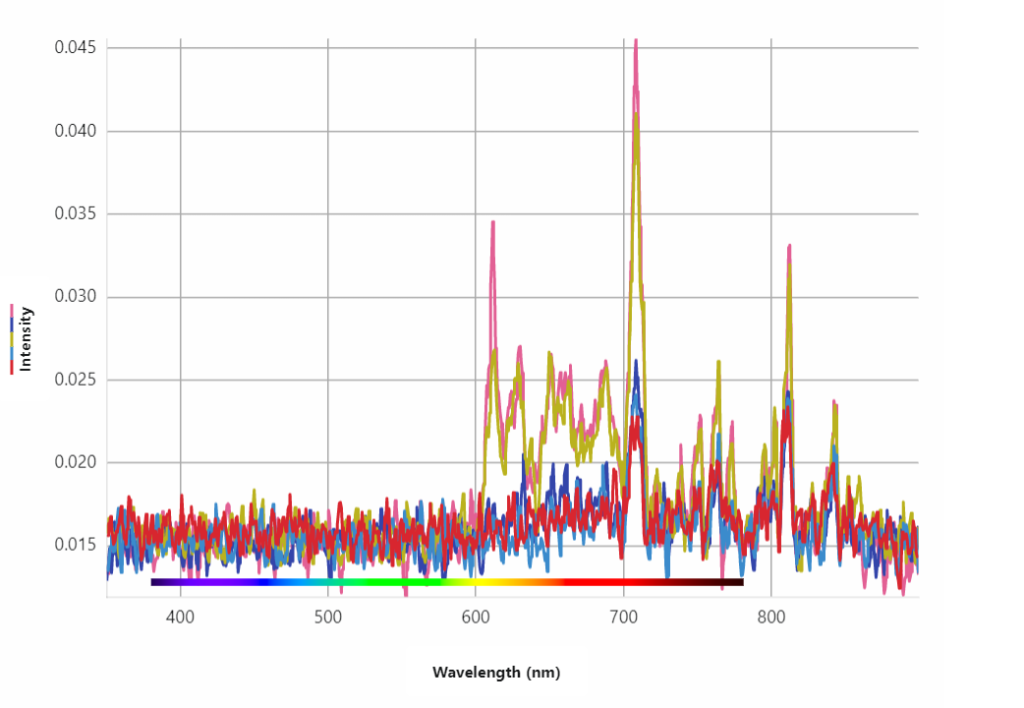
- https://pompeiisites.org/wp-content/uploads/Termopolio-Regio-V-12-%E2%94%AC%C2%AEluigispina.jpg ↩︎
- Apicius I:1 and I:4-6 (Apicius and Vehling 1977) are all related to spicing or flavoring wine, but others exist. ↩︎
- Translation by Jean Kveberg, using Google Translate 5/24/2024 https://translate.google.com/ ↩︎
- https://pompeiisites.org/wp-content/uploads/Termopolio-Regio-V-CS11.jpg ↩︎
- https://www.oxfordarchaeology.com/news/roman-egg-recovered-site-aylesbury, https://www.bbc.com/news/uk-england-beds-bucks-herts-68247184 ↩︎

